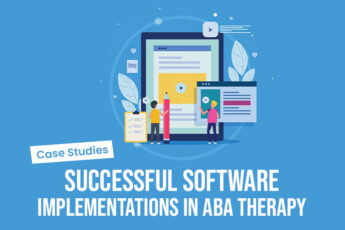Applied Behaviour Analysis (ABA) has proven to be an effective intervention for individuals with autism spectrum disorder (ASD) and other developmental disabilities. However, the field faces a critical need to incorporate cultural sensitivity into its practices to better serve the diverse populations it aims to help.
Cultural sensitivity involves understanding and respecting the unique cultural values backgrounds, and traditions of clients, this means acknowledging the unique values, beliefs, and practices of each individual and their family. By actively listening, seeking cultural consultation, and adapting our approach, we can build trust, respect, and ultimately, more effective interventions for all.
This blog explores the importance of cultural sensitivity in ABA and provides practical strategies for practitioners to effectively support diverse clients.
Understanding the Need for Cultural Sensitivity in ABA
The United States is a melting pot of cultures, and the prevalence of ASD is not limited to any specific ethnic group. Therefore, ABA practitioners must be equipped to understand and respond to the unique cultural values, beliefs, and communication styles of the diverse families they work with. Cultural sensitivity is fundamental to ethical and culturally competent care, exceeding mere politeness.
Challenges Faced by Diverse Populations in ABA
Many cultural groups experience barriers to accessing ABA services due to factors such as language differences, lack of culturally appropriate resources, and negative stereotypes associated with the field. Furthermore, families from diverse backgrounds may have varying perspectives on disability, communication styles, and child-rearing practices, which can create misunderstandings and hinder effective collaboration between families and practitioners.
Strategies for Building Cultural Sensitivity in ABA
1. Embrace Cultural Humility:
This involves acknowledging the limitations of one’s own cultural knowledge and engaging in a lifelong learning process to gain a deeper understanding of diverse perspectives. Practitioners should actively seek out opportunities to learn about different cultures, their values, and their beliefs about disability.
2. Develop Culturally Responsive Assessment Tools:
Traditional assessment tools may not be culturally appropriate for all families. Practitioners should be aware of the potential biases embedded in these tools and adapt them or utilize culturally sensitive alternatives. This might involve incorporating cultural factors into assessments, using culturally appropriate language, and involving family members in the assessment process.
3. Utilize Culturally Appropriate Intervention Strategies:
ABA interventions must be tailored to the individual needs and cultural contexts of the clients. Collaborative efforts with families, respecting their values and traditions, are key to effective ABA interventions. This may involve incorporating cultural elements into treatment plans, using culturally relevant materials, and collaborating with culturally sensitive professionals from other disciplines.
4. Promote Family Involvement and Collaboration:
Families are integral to the success of any ABA intervention. Practitioners should actively involve families in the treatment process, ensuring they feel heard, respected, and empowered. This includes actively listening to family concerns, respecting their perspectives on disability, and working collaboratively to set treatment goals.
5. Foster Cultural Sensitivity in the Workplace:
Organizations providing ABA services should foster a workplace culture that values diversity and inclusivity. Diverse hiring, cultural sensitivity training, and a welcoming environment promote inclusivity in ABA.
6. Seek Continuous Professional Development:
Staying up-to-date on the latest research and best practices related to cultural sensitivity in ABA is crucial. Practitioners should actively participate in workshops, conferences, and training programs that address these topics.
7. Build Relationships with Community Leaders:
Establishing relationships with community leaders and organizations serving diverse populations can provide practitioners with valuable insights into the cultural nuances of the communities they serve. This can facilitate building trust and understanding between families and practitioners.
Conclusion: Embracing Diversity for a More Inclusive ABA
Cultural sensitivity in ABA fosters inclusivity and equity, better serving diverse individuals with ASD and their families. Serving diverse families requires lifelong learning, challenging assumptions, and respecting cultural values and beliefs.
DIBS understands the importance of cultural sensitivity in all aspects of business, including healthcare and therapy. We are committed to developing software solutions that support cultural competency and inclusivity. Technology empowers ABA practitioners to bridge language gaps, personalize treatment, and connect with diverse communities. We believe that technology can play a crucial role in building a more inclusive and equitable world for all.







Leave a Comment